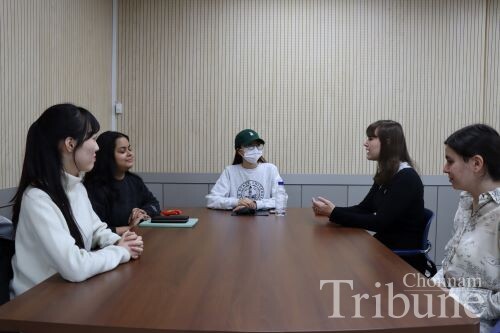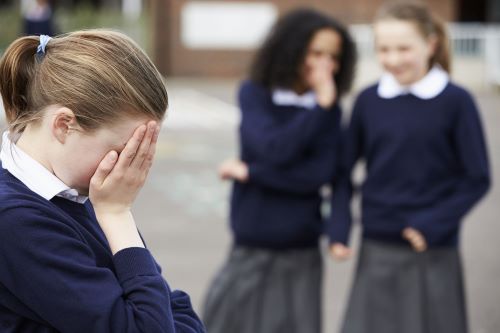
The Netflix sensation Korean drama, “The Glory” has shed light and caused global discourse on school bullying. When it was revealed that aspects of the series, such as the bullies burning a classmate with a hair curler, were drawn from real bullying cases in South Korea, the whole world was in shock. Bullying, in various forms, is a growing problem that is often overlooked as teasing on the playground. Recently, many nations have recognized the gravity of the consequences of bullying and are seeking to find answers to put a stop to the crisis. The Chonnam Tribune brings various opinions from international and Korean students on school bullying, and how each country is working to counter the widespread social epidemic.
How prevalent is bullying in your country, and what are the most common types and targets of bullying?
Park Seung-hyun (South Korea): According to a survey on school violence conducted by the Ministry of Education in 2022, 1.7 percent of students said they had experienced some form of school violence. This percentage is higher than that in 2019 (1.6 percent), before the pandemic. The forms of abuse that typically take place in school are violence, sexual violence, insults, and extortion. In South Korea, high school students can spend up to 14 hours a day in school, and most activities are done as a class. Because of all the time you spend with your classmates, bullying in the country tends to mostly be about making someone else a social outcast, by isolating them from their peers.
Shreya Ghosh (India): In India, what people might consider bullying usually comes from friends, like bullying you in a softer manner, such as joking or saying something very insensitive. Between the two school boards in India, the state board and the Central Board of Secondary Education (CBSE, left behind by the British), people who studied in select boards such as the CBSE and continued their studies in English consider themselves superior to the students who studied in local boards. This can lead to cyberbullying. A few years ago, during the COVID-19 lockdown, there was a big case called “The Boy’s Locker Room.” These boys from New Delhi had made a group on social media and would talk about how they would harass girls, making fun of them. Screenshots from the conversation were leaked by one of the boys in the group, and this became a major issue in India. People began to consider the fact that being on social media and discussing things without knowing the whole matter can make you a bully.
Bérénice Maréchal (France): I think that just like every country in the world, France has always had problems with bullying. But in these last couple of years, there has been a noticeable increase in bullying cases in school because the children are getting on social media younger and younger. It greatly facilitates bullying because it enables bullies to abuse their peers in the comfort of their own homes. Earlier this year, a 13-year-old boy committed suicide after facing repeated homophobia and bullying from his classmates.

What sorts of measures have been taken in your country to prevent and deal with bullying?
Bérénice Maréchal: One measure France has taken is the restriction of cellphone use in elementary and middle schools. The government also created an “ambassador” program. The 23,000 chosen middle school ambassador students in 2023 formed to notify people about bullying and teach people how to alert adults so the victims aren’t left alone. They also teach their classmates about bullying to try to prevent further harm. The town halls and schools provide counseling for the victims, and a law was promulgated in 2022 to punish school bullies with fines and prison time.
Julia Zorc (USA): There are no national laws related to bullying in the U.S. I cannot speak for other states as well, but my state has very vague guidelines that leave most of the work up to individual schools. Some schools have a rule that says all parties involved in a fight get the same punishment. So, if one student assaults another and the victim does anything to fight back, they could both get the same punishment. A lot of people have criticized these rules as they are essentially encouraging kids to let themselves get attacked and not defend themselves. Somewhat more successful are school-wide programs related to bullying prevention. Counselors who are specially trained help students individually help build up self-confidence, and give them the skills to express their feelings without violence. Statistics on the effectiveness vary widely, but it seems that programs like this decrease bullying by about 25 percent.
Shreya Ghosh: In terms of prevention, it varies by state, but there are no written laws as of now. It is just up to the parents, the schools, or maybe your peers/friends to notice bullying. Ever since cyberbullying in India has gotten serious, and suicide rates have escalated, some forms of judicial penalties have been established, such as paying a fine or spending five to six years in a juvenile center.
What changes or actions do you believe are necessary to combat bullying effectively?
Julia Zorc: For anti-bullying programs to work, I think they need to start early in a child’s education. In preschool, children should be exposed to literature that portrays people who are different from them, as well as books that teach empathy. Children should also be encouraged to talk about these books and how it makes them feel. Schools also usually have counselors, but sometimes I feel they are pushed aside by the school administration. Counselors should be mediators between students and should provide a safe space for students to share their experiences and thoughts. Everyone knows that a good school supports students, it’s time for every school to do it.
Park Seung-hyun: I hope actions will be carried out in a way that puts students' human rights first. Until now, school violence has not been properly dealt with in terms of protecting the victim. In addition, I think arts and physical education as a preventive measure against school violence should be supported, I hope for a day when school will not only be seen as a means to enter college, but also as a space where students can cultivate holistic growth.
Bullying in schools is a pervasive problem that affects children all over the world. Despite efforts to combat it, such as anti-bullying campaigns and stricter disciplinary measures, it continues to be a major issue, traumatizing numbers of students even into adulthood. By listening to and amplifying the voices of those affected by bullying, we can build greater empathy and understanding, and work towards creating safer and more supportive school environments for all students. While the road ahead may be long, progress is possible, and together, we can make a difference.
--------------------------------------------------------------
Park Seung-hyun, Sophomore, Dept. of English Education, Korea
Julia Zorc, Regular Korean Language Course, Language Education Center, U.S.A
Shreya Ghosh, Exchange Student, Dept. of Biological Sciences, India
Bérénice Maréchal, Exchange Student, School of Mechanical Engineering, France
By Lee Younny, Editor

